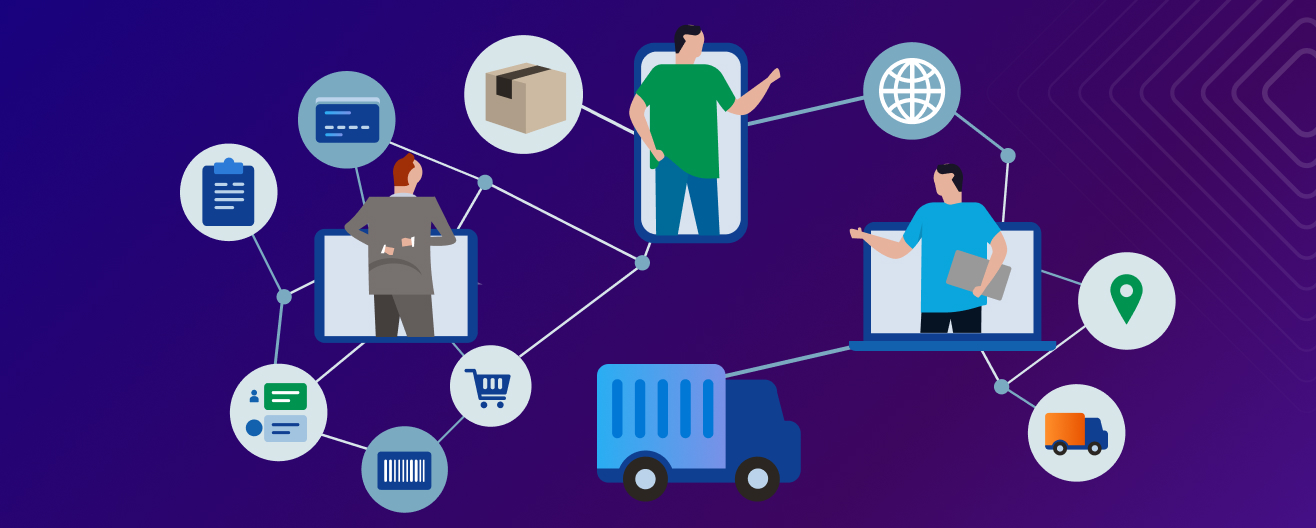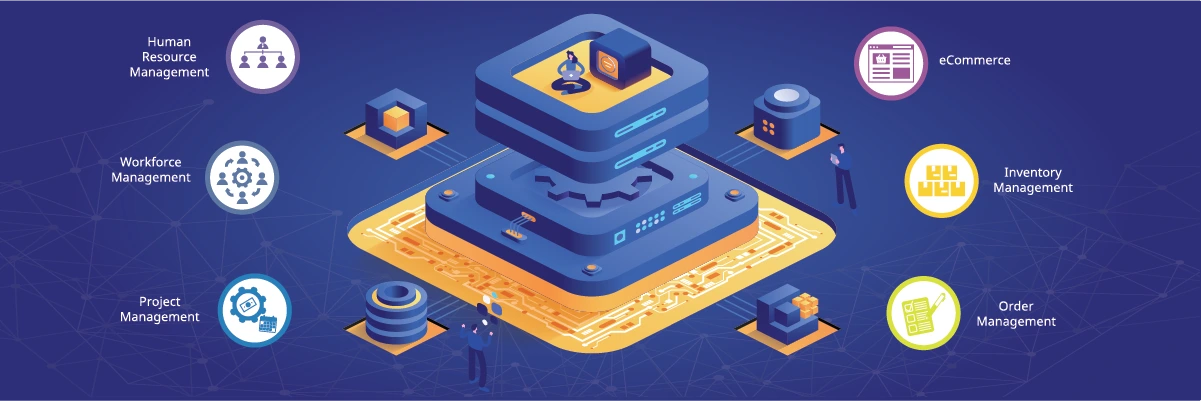
Money is moving faster than ever, thanks to digital tools such as online banking and mobile payments. But with speed comes the need for better safety and trust. This is where blockchain technology comes into play.
Known first for powering cryptocurrencies such as Bitcoin, blockchain is now changing how banks and businesses handle money. Blockchain for secure financial transactions means your money moves safely, quickly, and without middlemen.
It helps reduce fraud, cuts costs, and enables payments to occur in real-time. More banks and companies are now utilizing blockchain in banking and finance because it maintains clear, unchangeable, and easily trackable records.
In this blog, you will learn how blockchain secures financial transactions, the benefits of blockchain in real-time payments, and why blockchain is the future of secure money transfers. It’s a smart, safe way to send and receive money; faster and with more trust than ever before.
According to Statista, Blockchain is transforming finance, gaming, and real estate through decentralization.
While today’s financial systems have come a long way, they still face major limitations. These challenges affect both consumers and institutions, slowing down processes, raising costs, and exposing sensitive data. To overcome these issues, many businesses now choose to hire blockchain developers who can build secure, transparent, and efficient financial solutions.
To understand why blockchain for secure financial transactions is gaining global attention, it’s important to look at the problems in the current system.
Traditional financial systems are often closed and fragmented. Banks and institutions work in silos, making it difficult to track the full history of a transaction. This lack of visibility can lead to:
In traditional cross-border payments, money passes through several intermediaries such as correspondent banks and clearinghouses. This can cause:
Every layer of the financial chain adds cost. Banks, card networks, and processors charge fees that cut into both consumer and business margins. This results in:
Traditional systems are centralized, meaning that if the central server is attacked, the entire system is at risk. This creates:
Nearly 1.4 billion people globally are unbanked, especially in developing regions. Traditional banking requires formal documentation, fixed locations, and regulated processes that many people cannot access.
Blockchain is a modern digital technology that works like a shared notebook; one that is available to everyone in a network and cannot be erased or changed once something is written in it. It is known as distributed ledger technology because the same record is stored across many computers, not in a single place. This makes it a powerful tool for building safer and faster financial systems.
In simple words, blockchain technology in finance helps record and track transactions such as money transfers, payments, and contracts, without needing a bank or middleman to check or approve them. Each transaction is grouped into a “block” and linked to the block before it. This creates a secure “chain” of data. These are some of the main features:
The strength of blockchain for secure financial transactions lies in its unique structure. Unlike traditional banking systems that rely on a central authority, blockchain uses a decentralized network, advanced encryption, and consensus mechanisms to ensure that every transaction is trustworthy, tamper-proof, and private. Let’s break down how this powerful system works to protect users and their money.
In traditional finance, all transaction data flows through a single central server, creating a clear target for hackers. Blockchain solves this by distributing data across a global network of computers (nodes). Each node holds a copy of the full transaction record and works together to verify new transactions.
Blockchain uses strong cryptographic algorithms to secure transaction data. Every detail is encrypted and turned into a unique digital code, making it unreadable to outsiders.
Before any transaction is added to the blockchain, it must be approved by the network through a consensus process. Two of the most widely used methods are:
These systems ensure that only valid, approved transactions are recorded, providing an extra layer of protection. This is essential in supporting real-time transaction processing with blockchain, especially for secure digital payments.
Once a transaction is confirmed and added to the blockchain, it cannot be changed or deleted. This feature is called immutability.
Blockchain allows pseudonymous transactions, meaning users don’t need to reveal their real identities. Instead, they use digital addresses and cryptographic signatures to send and receive money.
Blockchain is changing the way money moves around the world. Traditional payment systems often involve delays, middlemen, and high transaction fees, especially for cross-border transfers. With blockchain, these problems can be solved. Here’s how it helps improve real-time payments:
One of the biggest benefits of blockchain in real-time payments is speed. Traditional bank transfers can take hours or even days, especially when different countries are involved. Blockchain allows payments to be processed and confirmed within seconds or minutes, no matter the time or location.
It is especially helpful for businesses and individuals who need fast and secure money transfers without waiting for bank approval or working hours.
With blockchain, there’s no need for middlemen like banks or payment processors to verify transactions. It reduces fees, especially for international payments. Whether it’s a large corporate transfer or a small peer-to-peer payment, blockchain offers cost-effective financial transactions.
This is a key reason why blockchain is used for payments in industries like remittances, e-commerce, and cross-border trade.
Unlike traditional systems that only operate during business hours or require long processing times on weekends or holidays, blockchain is always running. Payments can be made and received 24/7, providing constant access to funds and services.
This makes real-time transaction processing with blockchain especially valuable for global businesses and urgent financial needs.
Blockchain uses strong encryption and decentralization, making it extremely hard to hack. Once a transaction is recorded, it can be changed or deleted. This helps prevent fraud and keeps every payment secure.
It’s one of the main reasons financial institutions are investing in blockchain for secure financial transactions.
Every transaction on the blockchain is recorded and can be tracked in real time. This helps both parties see exactly where the money is, improving trust. Businesses can easily audit payments, and individuals can confirm that funds were sent or received without delay.
This visibility is especially useful in banking and finance, where accuracy and trust are critical.
Blockchain supports smart contracts, which are automated agreements that process payments once certain conditions are met. It allows payments to happen immediately and without manual work, reducing delays and errors.
For example, payment for goods can be released automatically when delivery is confirmed. It adds speed and reliability to every deal.
Decentralized Finance (DeFi) is one of the most exciting innovations built on blockchain. Unlike traditional banking systems that rely on institutions like banks, brokers, and clearinghouses, DeFi uses blockchain technology in finance to offer services directly to users through open-source protocols and smart contracts.
DeFi is showing the world why blockchain is the future of secure financial transactions by removing middlemen, lowering costs, and making financial services accessible to anyone with an internet connection.
Through DeFi platforms, users can lend or borrow cryptocurrencies using smart contracts, which automatically manage and enforce the terms of the agreement.
This peer-to-peer system showcases how blockchain secures financial transactions, creating a trusted environment without the need for banks or financial agents.
DeFi allows users to earn income by providing liquidity to decentralized platforms. This process is known as yield farming.
This is one of the key benefits of blockchain in real-time payments, as users can earn and access rewards without waiting for bank processing.
DEXs allow users to trade cryptocurrencies directly with one another; no centralized exchange, account verification, or third-party approval is needed.
This model is reshaping blockchain in banking and finance, offering a safer, more flexible alternative to traditional exchanges and financial systems.
At its core, DeFi is about giving power back to users. It proves why to use blockchain for payments and broader financial services:
By offering borderless, permissionless, and automated services, DeFi is a clear example of blockchain for securing money transfers and financial freedom.
Governments around the world are now using blockchain technology in finance to create digital versions of their country’s money. These are called Central Bank Digital Currencies (CBDCs).
Unlike Bitcoin or other cryptocurrencies, CBDCs are controlled by central banks, but they use blockchain for secure financial transactions.
CBDCs aim to make money safer, faster, and easier to use, especially for people who don’t have access to banks.
With CBDCs, governments can track money as it moves in real time. This helps them manage the economy better and stop misuse.
This is a smart use of blockchain in banking and finance, giving better control with more accuracy.
Many people around the world still don’t have access to banks. CBDCs can help by offering digital wallets that are simple to use.
This shows why blockchain for payments includes everyone, not just those with access to traditional banks.
Since CBDCs use blockchain, all transactions are secure, traceable, and can’t be changed.
This is how blockchain secures financial transactions by making it nearly impossible to cheat or tamper with records.
Some countries have already started using or testing CBDCs:
Blockchain technology is fundamentally reshaping the financial landscape. With its promise of security, transparency, speed, and cost-efficiency, it addresses the core limitations of traditional financial systems. While there are challenges to overcome, the momentum behind blockchain adoption is undeniable.
As institutions, governments, and individuals increasingly embrace blockchain, we move closer to a future where secure, real-time financial transactions are not just possible; they are the norm.
In the age of digital transformation, blockchain stands out as the most powerful tool to redefine the way we move money, build trust, and create financial inclusion on a global scale.
Technical Content Writer
Kavita has a strong background in technology and writes about cybersecurity, software development, and digital marketing. She makes complex topics simple and easy to understand. Her content helps businesses, developers, and marketers learn about cybersecurity threats, best practices, software development, and digital strategies to stay informed and succeed online.



